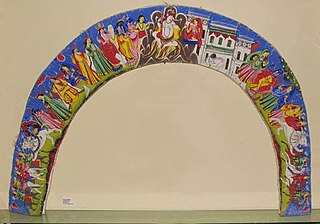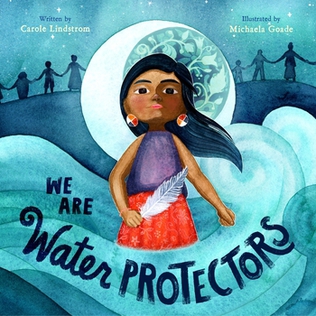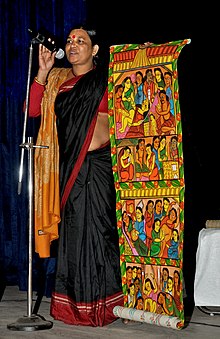
The Patua are an artisan community found in the state of West Bengal, Bihar, Jharkhand and Odisha in India and parts of Bangladesh. Some Patuas are Hindus, while others are Muslims. Hindu Patuas are active in the Kalighat and Kumartuli regions of Calcutta, along with some other parts of West Bengal, where they are reduced in number. It is believed that most Patuas are actually converts from Hinduism to Islam. Today, they practice customs that are both Hindu and Islamic in nature. They may have also been Buddhist at various points in time. Today, however, the majority of them are impoverished Muslims who rely on patronage from mainly Hindus, but also increasingly from tourists who buy their painted scrolls, as Frank J. Korom has described and analysed in his book Village of Painters: Narrative Scrolls from West Bengal.

The music of West Bengal includes multiple indigenous musical genres such as Baul, Ramprasadi, Bishnupuri Classical, Kirtan, Shyama Sangeet, Rabindra Sangeet, Nazrul Geeti, Dwijendrageeti, Prabhat Samgiita, Agamani-Vijaya, Patua Sangeet, Gambhira, Bhatiali, Bhawaiya, Bengali Rock.

Indian painting has a very long tradition and history in Indian art, though because of the climatic conditions very few early examples survive. The earliest Indian paintings were the rock paintings of prehistoric times, such as the petroglyphs found in places like the Bhimbetka rock shelters. Some of the Stone Age rock paintings found among the Bhimbetka rock shelters are approximately 10,000 years old.

Mamata Banerjee is an Indian politician who is serving as the eighth and current chief minister of the Indian state of West Bengal since 20 May 2011, the first woman to hold the office. Having served many times as a Union Cabinet Minister, Mamata Banerjee became the Chief Minister of West Bengal for the first time in 2011. She founded the All India Trinamool Congress in 1998 after separating from the Indian National Congress, and became its first chairperson. She is often referred to as 'Didi'.

Kalighat painting, Kalighat Patachitra, or Kalighat Pat originated as a distinct style or genre of Indian paintings in the 19th century, practiced and produced by a group of specialised scroll painters known as the patuas in the vicinity of the Kalighat Kali Temple in Kolkata, in the present Indian state of West Bengal. Composed of bold outlines, vibrant colour tones, featuring minimal background details, these paintings and drawings, done on hand-made, or more usually, machine manufactured, paper, depicted mythological stories, figures of Hindu gods and goddesses, as well as scenes from everyday life and society, thereby recording a socio-cultural landscape which was undergoing a series of transitions during the 19th and early 20th century, when the Kalighat pat reached its pinnacle.

Cheriyal Scroll Painting is a stylized version of Nakashi art, rich in the local motifs peculiar to the Telangana. They are at present made only in Hyderabad, Telangana, India. The scrolls are painted in a narrative format, much like a film roll or a comic strip, depicting stories from Indian mythology, and intimately tied to the shorter stories from the Puranas and Epics. Earlier, these paintings were prevalent across Andhra, as also various other parts of the country, albeit flavoured with their distinct styles and other local peculiarities dictated by the local customs and traditions. In the same way, Cheriyal scrolls must have been popular across Telangana in earlier times, though with the advent of television, cinemas and computers it has been fenced into its last outpost, the Cheriyal town.

Patachitra or Pattachitra is a general term for traditional, cloth-based scroll painting, based in the eastern Indian states of Odisha, West Bengal and parts of Bangladesh. Patachitra artform is known for its intricate details as well as mythological narratives and folktales inscribed in it. Pattachitra is one of the ancient artworks of Odisha, originally created for ritual use and as souvenirs for pilgrims to Puri, as well as other temples in Odisha. Patachitras are a component of an ancient Bengali narrative art, originally serving as a visual device during the performance of a song.

Kalamkari is a type of hand-painted cotton textile produced in the Indian state of Andhra Pradesh. Only natural dyes are used in Kalamkari, which involves twenty-three steps.

Ellison Litton Barber is an American journalist and correspondent for NBC News based in New York. She contributes to NBC News, MSNBC and NBC News Now.

Chalchitra is a part of Bengal Patachitra. It referred to the Debi Chal or Durga chala, the background of the Durga Pratima or idol. Originally, these were used to give a proper proportion to the structure. This tradition is very ancient and is still maintained.

The Indian state, West Bengal has a rich and cultural heritage. Due to the reign of many different rulers in the past, arts and crafts in West Bengal underwent many changes giving an artistic diversity today in the forms of traditional handicrafts, terracotta, painting and carving, dances and music.

Patua Sangeet or Poter Gan is a cultural tradition of Bengal Patachitra. It is performed by a Patua. It is famous in the village part of West Bengal like Birbhum, Jhargram, Bardhaman and Murshidabad as a folk song of West Bengal.
Manimala Chitrakar is a patua artist from West Bengal.

Devi Lalita Sridhar FRSE is an American public health researcher, who is both professor and chair of global public health at the University of Edinburgh, Scotland. Her research considers the effectiveness of public health interventions and how to improve developmental assistance for health. Sridhar directs the University of Edinburgh's Global Health Governance Programme which she established in 2014.

Dame Sarah Catherine Gilbert is an English vaccinologist who is a Professor of Vaccinology at the University of Oxford and co-founder of Vaccitech. She specialises in the development of vaccines against influenza and emerging viral pathogens. She led the development and testing of the universal flu vaccine, which underwent clinical trials in 2011.

The COVID-19 pandemic in Myanmar is part of the worldwide pandemic of coronavirus disease 2019 caused by severe acute respiratory syndrome coronavirus 2. The virus was confirmed to have reached Myanmar on 23 March 2020. On 31 March 2020, the Committee for Coronavirus Disease 19 (COVID-19), headed by First Vice President Myint Swe and made up of members from the various union ministries, was formed by President Win Myint to combat the spread of COVID-19 in the country.

The COVID-19 pandemic was first confirmed in the Indian state of West Bengal on 17 March 2020 in Kolkata. The Health and Family Welfare department of Government of West Bengal has confirmed a total of 13,43,442 COVID-19 positive cases, including 1,09,806 active cases, 15,120 deaths and 12,18,516 recoveries, as of 28 May 2021.

Kizzmekia "Kizzy" Shanta Corbett is an American viral immunologist. She is an Assistant Professor of Immunology and Infectious Diseases at Harvard T.H. Chan School of Public Health and the Shutzer Assistant Professor at the Harvard Radcliffe Institute since June 2021.
Plandemic: The Hidden Agenda Behind Covid-19 and Plandemic: Indoctornation are a 2020 conspiracy theory video and film, respectively. Both were produced by Mikki Willis and promote misinformation about the COVID-19 pandemic. They feature Judy Mikovits, a discredited American researcher who has been described as an anti-vaccine activist. The first video, in addition to promoting various conspiracy theories, also features Willis and Mikovits discussing viruses in general and Mikovits herself. Willis produced the first video with a low budget under the name of his production company Elevate Films. Three months after its Internet release, Indoctornation, which includes more interviewees, was released by conspiracy distributor London Real.

We Are Water Protectors is a 2020 picture book written by Carole Lindstrom and illustrated by Michaela Goade. Written in response to the Dakota Access Pipeline protests, the book tells the story of an Ojibwe girl who fights against an oil pipeline in an effort to protect the water supply of her people. It was published by Roaring Brook Press on March 17, 2020. The book was well received. Critics praised its message of environmental justice, its depiction of diversity, and the watercolor illustrations, for which Goade won the 2021 Caldecott Medal, becoming the first Indigenous recipient of the award. The book also received the 2021 Jane Addams Children's Book Award winner in the Books for Younger Children category.


















